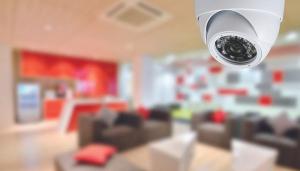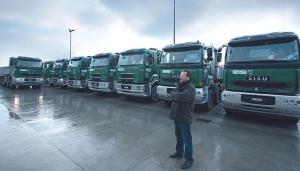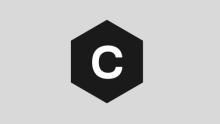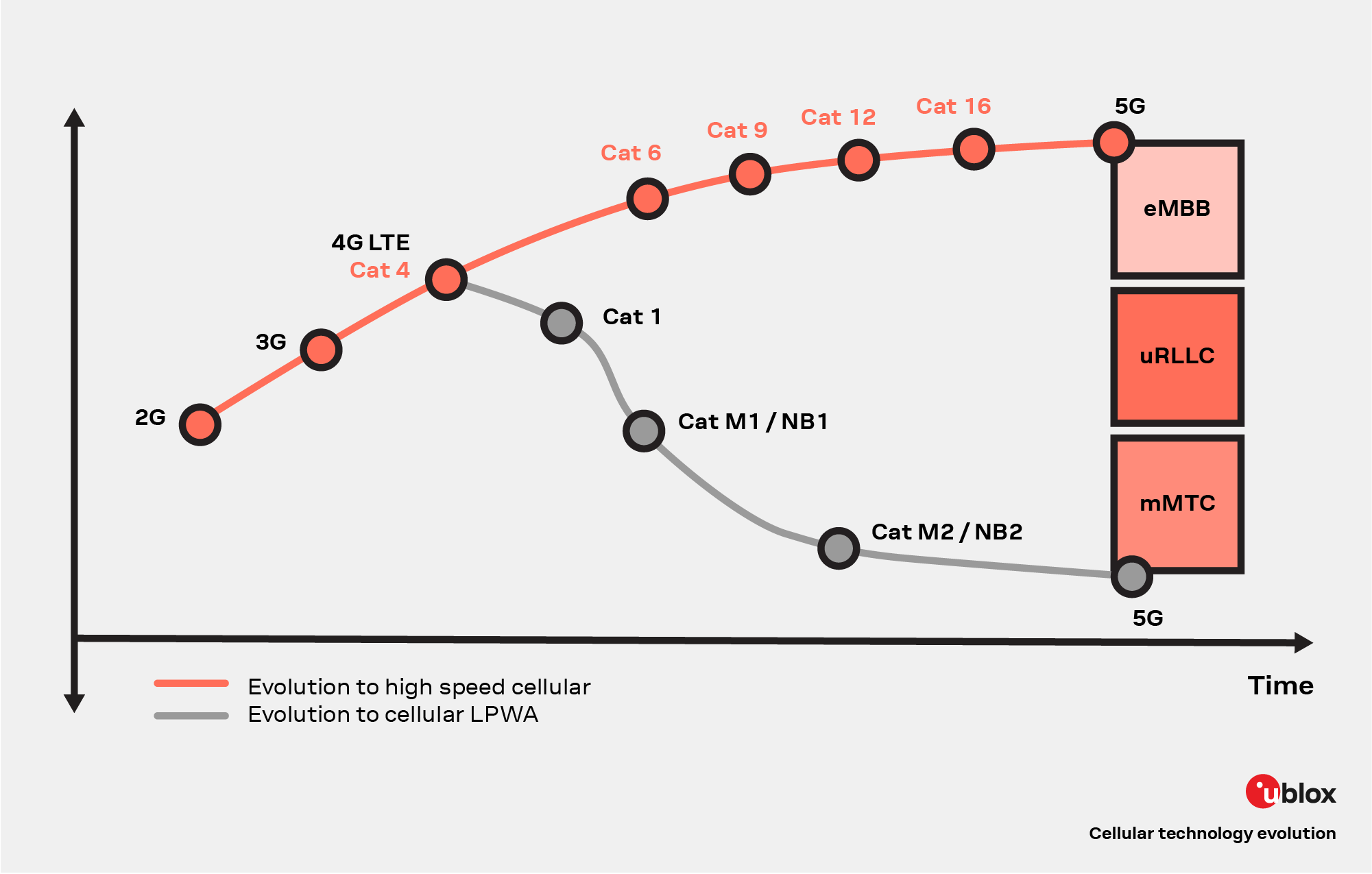
Technology
|
02 May 2022
LTE Cat 4
LTE Cat 4 是 LTE Advanced(LTE-A)之前最高、最强大的 LTE 类别。
LTE Cat 4 的数据传输速率从几十兆比特/秒到几百兆比特/秒不等,设计难度降低,总体拥有成本低廉,结构非常紧凑。
与 LTE Cat 1 相比,LTE Cat 4 只需增加一个发射天线,就能将数据传输速率提高约 10 倍,还能提供
- 全球覆盖、
- 切换能力、
- LTE 语音(VoLTE)
- 低延迟
使其成为物联网应用的完美解决方案,可满足更高的吞吐量、全球便携性和经济实惠的解决方案实施要求。
什么是 LTE Cat 4?
LTE Cat 4 是 "LTE Advanced "分类之前最常见、最简单的高速 LTE 类别。

为什么简单?与归入 LTE-Advanced 领域的更高 LTE 类别相比,LTE Cat 4 只需相对简单�的硬件实施工作即可提供高数据传输速率。
一方面,LTE-A 解决方案需要复杂的 MIMO(多输入多输出)天线阵列来提供最高的数据传输速率,而复杂的 MIMO 系统需要大量的设计工作、深厚的射频专业知识、为多天线阵列分配更大的电路板面积以及所有相关的额外成本。
另一方面,LTE Cat 4 不需要复杂的 4x4 或 8x8 MIMO 天线阵列,与 LTE Cat1 设计相比,只需增加一个发射天线就能提供很高的数据传输率。
LTE Cat 4 上行链路数据传输速率高达 50Mbps,下行链路数据传输速率高达 150Mbps,适用于高质量视频监控、路由器和销售点终端等应用。为了实现这一性能,LTE Cat 4 采用了最简单的 MIMO 配置:2x2 MIMO(2 个发送天线和 2 个接收天线)。
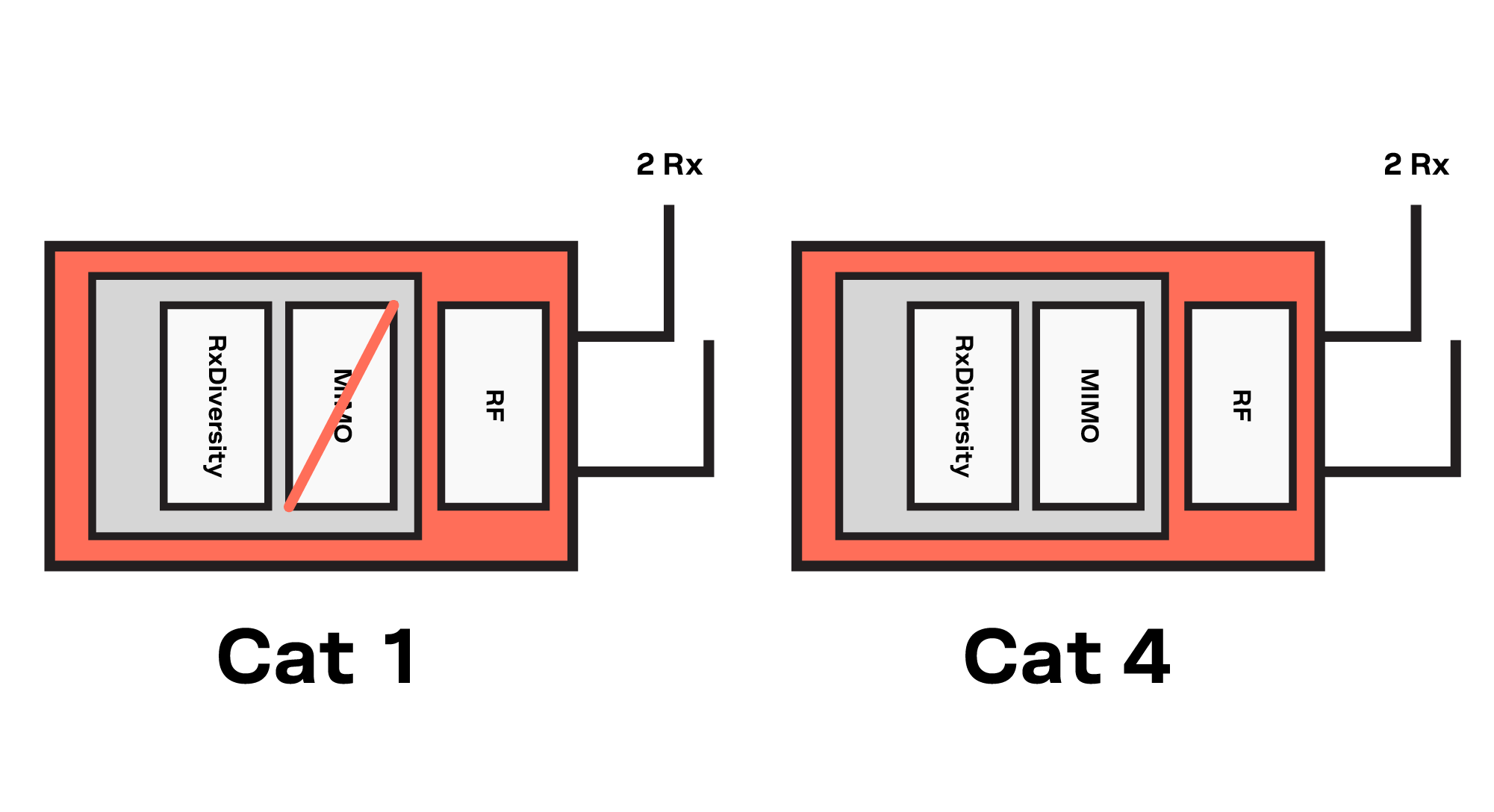
与其他多输入多输出(MIMO)解决方案相比,这种解决方案集成相对简单,但数据传输率却很高。
下表报告了一些 LTE 类别的数据,毫无疑问,LTE Cat 4 代表了数据速率与成本(模块成本和实施成本)之间的最佳平衡,适用于需要更高的数据速率和全球便携性的物联网应用。
LTE Cat 1 和 LTE Cat 4 在数据传输速率能力上的惊人差距(10 倍以上)是显而易见的,在设计上只需增加一个天线;从 LTE Cat 1 支持的纯 RX 分集到 LTE Cat 4 要求的 2x2 MIMO。
| LTE 类别 | 最大 DL (兆比特/秒) | 最大 UL (兆比特/秒) | 多输入多输出 |
|---|---|---|---|
| 1 | 10 | 5 | 否,仅 RX 分集 |
| 4 | 150 | 50 | 2x2 |
| 6 | 300 | 50 | 2x2 或 4x4 |
| 9 | 450 | 50 | 2 或 4 |
| 12 | 600 | 100 | 2 或 4 |
为什么 LTE Cat 4 是最佳平衡?
在大多数(但不是全部)物联网用例中,输出吞吐量比输入吞吐量重要得多,因此我们可以说,从统计数据来看,物联网应用的上行链路能力比下行链路能力更重要。而消费市场用例恰恰相反,上网冲浪对下行链路能力的要求高于上行链路能力。
从上表中,我们不难看出,LTE Cat 1 和 LTE Cat 4 板卡设计的区别仅在于一个发射天线,但板卡设计上的这一简单区别却使 LTE Cat 4 解决方案的数据传输速率提高了 10 倍,上行链路数据传输速率从 5Mbps(Cat 1 提供)提高到 50Mbps。
现在,在更高的 LTE-A 类别中,我们看不到上行链路中的这种 10 倍系数,因为设计需要更多的天线,即从 Cat 4 到 Cat 6、8、12 以及更多。
对于更高的 LTE 类别,上行链路能力有时会增加 1.5 倍、2 倍或更多,但模块成本和实施成本也会增加。
事实上,LTE Cat 4 与更高 Cat 的 LTE-A 解决方案之间的成本差异不容忽视,不仅要考虑模块的购置成本,还要考虑 LTE-A 更复杂的射频设计,如 4x4 MIMO 或 8x8 MIMO 解决方案。
因此,我们可以说 LTE Cat4 是性能、覆盖范围和成本(模块和实施)之间真正的最佳平衡点,是多个垂直物联网市场的完美解决方案。
最后,随着全球许多移动网络运营商宣布 2G 和 3G 网络的日落,许多传统物联网应用需要迁移到新的全球覆盖、长期可用的蜂窝技术。这些传统物联��网应用仍基于 "老式 "蜂窝技术的主要原因显而易见:2G 和 3G 在过去几年中提供的全球可移植性。
如今,情况正在发生变化,随着最近宣布的先关闭 3G、后关闭 2G 的计划,4G LTE 将成为未来几年唯一覆盖全球的蜂窝技术。
诚然,最新的 5G 技术已经发布并部署在某些地方,但它无法保证在未来 5-10 年内实现全面覆盖,尤其是在室外。
大多数传统物联网应用,即那些数据传输率低但需要全球便携性的应用(由于其区域性部署,因此不针对 LTE-M 或 NB-IoT),将迁移到 LTE Cat 1(某些地区为 Cat 1 之二)。
Cat 1 无法满足高数据速率的传统物联网应用将迁移到 LTE Cat 4,这对它们来说是最方便的解决方案。
事实上,LTE Cat 4 提供了高数据传输速率、全球便携性和相对较低的集成复杂性,可设计出体积小巧、成本低廉的解决方案。
主要应用包括
Highlighted u-blox offering


